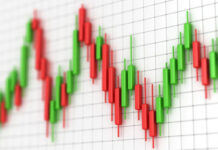Markets
Today’s trading session was mainly sentiment driven as markets considered all the pros and cons of the gradual lifting of the lockdown measures, i.e. an economic restart vs. risks of second wave of coronavirus cases. The former clearly dominated today. Oil rallies more than 10% with Brent near $30/b. Although some (European) indices still trade below intraday highs in the wake of the German court ruling on the legality of the ECB’s PSPP, they still manage to eke out gains ranging from 1.5 to 2%. US stocks open with a gain of 1% or higher as they await US ISM business confidence in the non-manufacturing sector. In that ruling, Germany judged some of the ECB’s actions unconstitutional and questions the proportionality of the program under review. It gave Lagarde and her team three months to come up with some necessary tweaks to the PSPP program. That leaves things in practice as they were for the time being. Other markets were more affected by the decision however. The German Bund significantly outperformed US Treasuries. The yield curve of the latter bear steepens as rates advance 2 bps (10-yr) to 5 bps (30-yr). The German yield curve bull steepens with yields declining -3 bps at the short end while trading stable at longer tenors. European peripheral spreads to the core widen. Markets fear other, maybe even more contentious bond buying schemes (including the PEPP for which the ECB ditched the issuer limit) might be challenged in the future. Greece (+7 bps) and Italy (+9 bps), key beneficiaries from the several purchase programs, underperform.
While the German court ruling sapped risk appetite only briefly from an equity perspective, things turned out different for FX markets, the euro in particular. EUR/USD hovered near 1.09 in the run-up to the decision but had to give in shortly afterwards. A breach below the 1.088-support area triggered a technical acceleration in the decline that stopped near key support at 1.084 (23.6% March high-low Fibonacci retracement). The trade-weighted dollar (99.8) came close to but failed to grasp the 100 barrier. USD/JPY trades in an extremely narrow range near 106.7. EUR/JPY on the other hand is currently printing a third consecutive decline, trading near April lows around 115.8. Euro weakness and a benign risk environment also pushed EUR/GBP lower. EUR/GBP 0.87 came under pressure but survived to live another day. The currency pair is currently changing hands at 0.8713.
News Headlines
The Swedish economy contracted by a modest 0.3% Q/Q in the first quarter, outperforming most other E(M)U countries and beating -1% Q/Q consensus. Sweden has amongst the fewest economic/social restrictions imposed to tackle the coronacrisis. The country isn’t out of the woods though, with the biggest negative impact expected in Q2. The Swedish National Institute of Economic Research last week revised down its 2020 GDP forecast to a 7% contraction. EUR/SEK barely budged today, changing hands around 10.70.
The US trade deficit widened from -$39.8bn in February to -$44.4bn in March. US exports dropped by a record 9.6% to $187.7bn while imports declined by the most in 11 year (6.2%) to $232.2bn. Last year’s US-Chinese trade war and other protectionist measures by US President Trump already put a slump on foreign trade which now took an additional corona hit (mainly via travel and tourism).
The US non-manufacturing ISM declined fell from 52.5 to 41.8 in April (vs 38 consensus), the lowest level since March 2009. Details showed a more pessimistic picture tough, like was the case for the manufacturing ISM last week. Steep drops in business activity (48 to 26), new orders (52.9 to 32.9) and employment (47 to 30) were compensated by a further surge in supplier deliveries (62.1 to 78.3) for the wrong reasons (constraints!) and inventory sentiment. Prices paid rose to 55.1 from 50.












